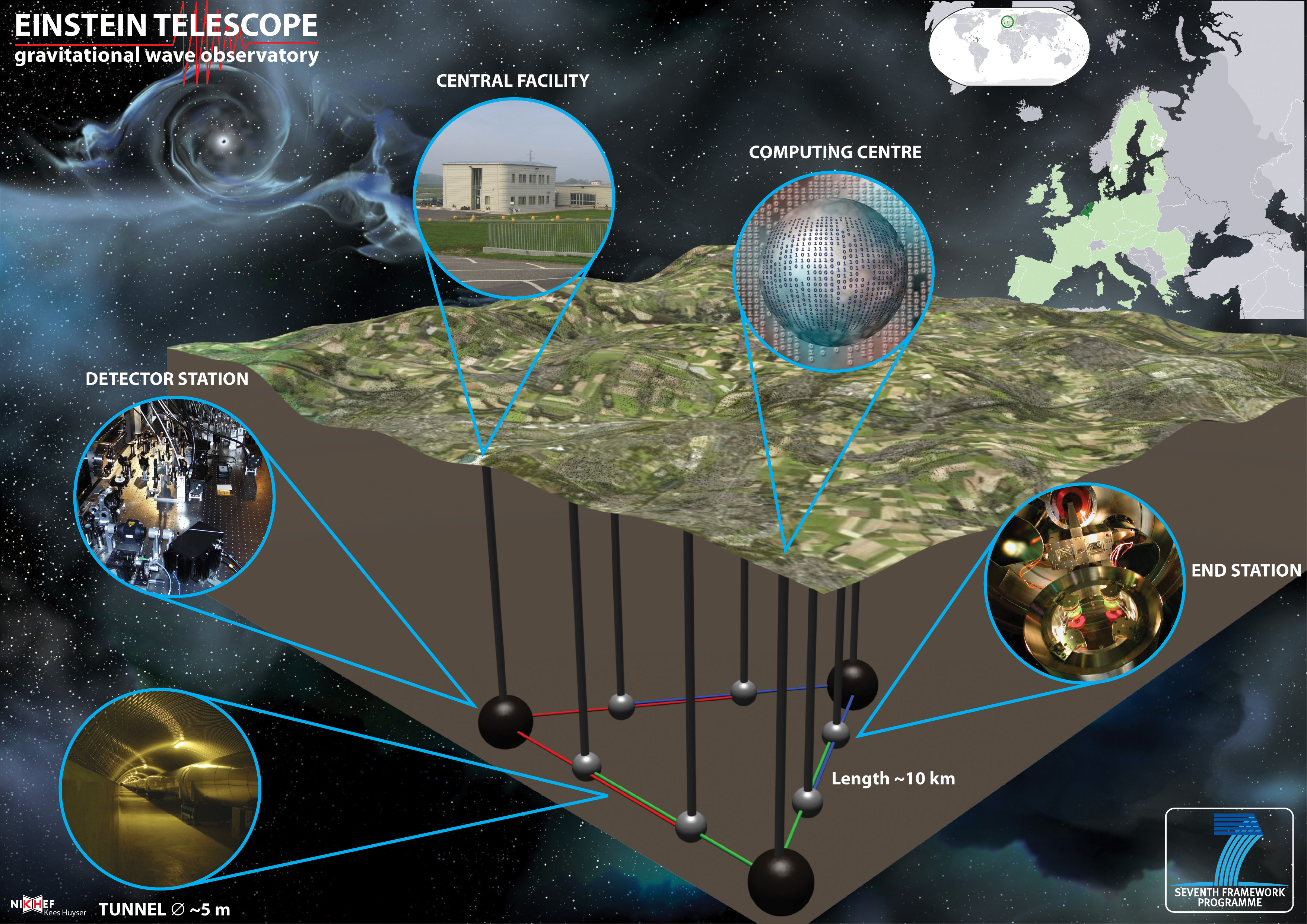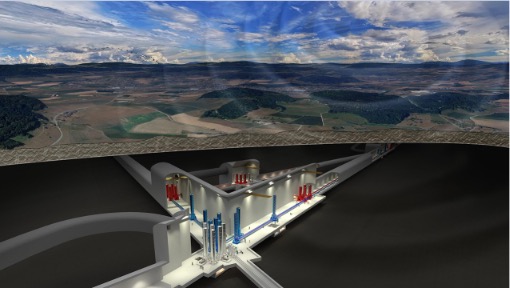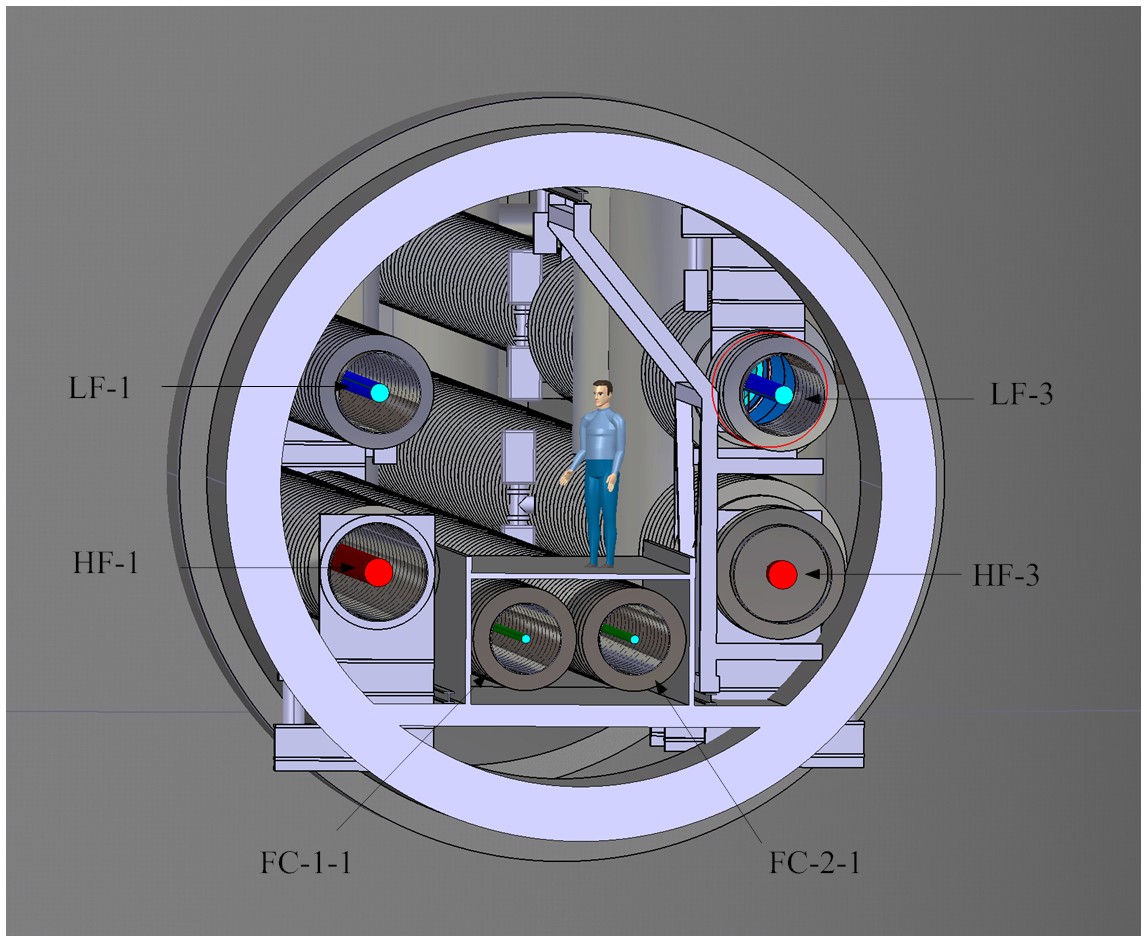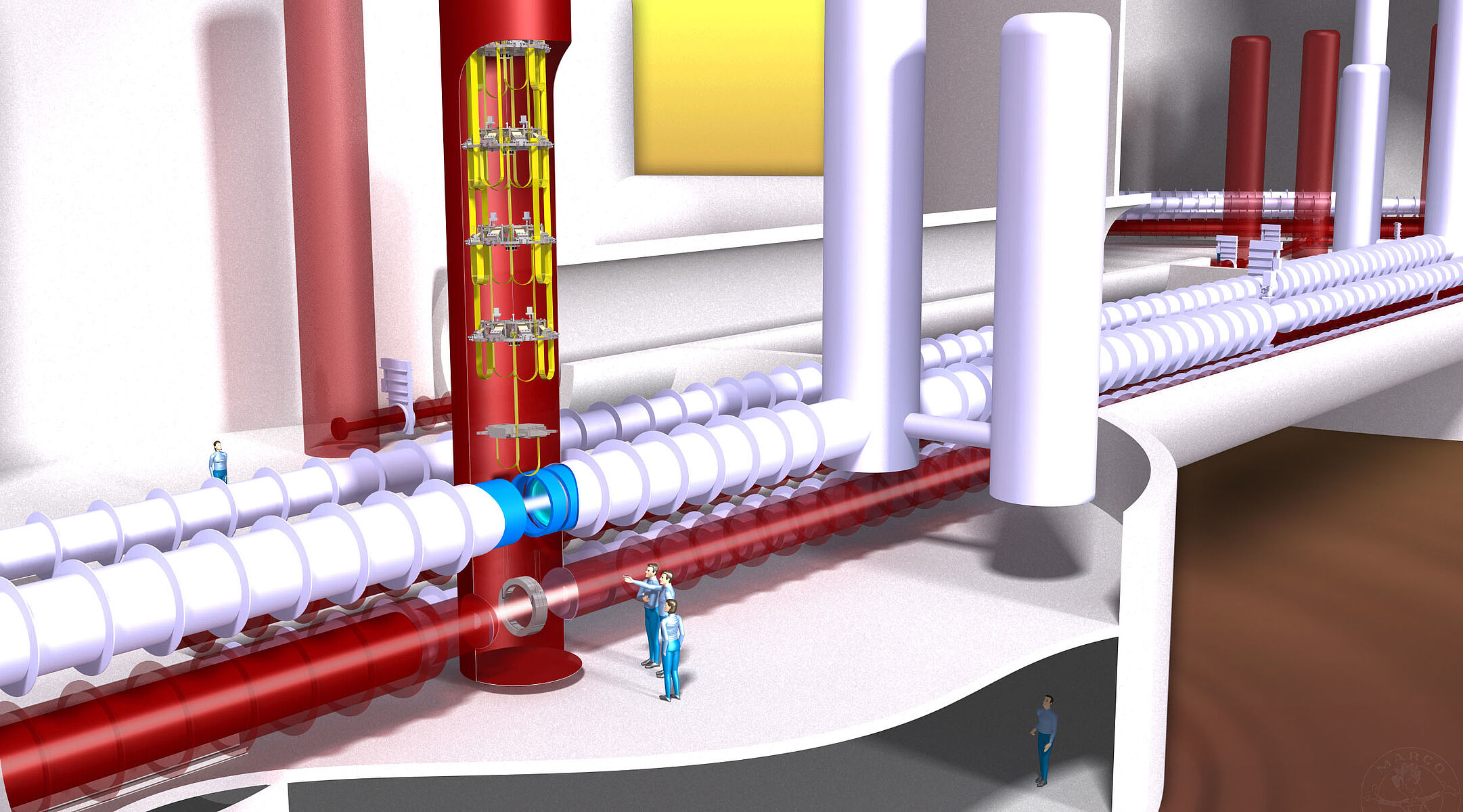Feasibility study for iconic Einstein Telescope
Amberg selected as part of JV
The underground Einstein Telescope will be Europe's most advanced observatory for gravitational waves. In collaboration with TEC, the Lombardi Group and Tractebel, the Amberg Group is investigating whether the soil of the Meuse-Rhine Euregion is suitable to house this world-class observatory.
The unique underground telescope will provide scientists with new insights into the history of the universe, able to detect a thousand times more gravity waves than its predecessors.
As part of the preliminary work the Netherlands, Belgium, and Germany are jointly investigating whether they can house this world-class observatory in South Limburg due to its unique soil conditions that dampen disruptive vibrations. To carry out the technical feasibility study on behalf of the Dutch National Institute for Subatomic Physics (Nikhef), a joint venture was formed between Tunnel Engineering Consultants (TEC), Amberg Engineering, Lombardi and Tractebel:
Great scientific significance
The observatory is of great significance for international physics and astronomy. In terms of importance, it is best compared to CERN in Geneva, the largest particle accelerator in the world.
With the Einstein Telescope, researchers will be able to hear black holes colliding and gain new insights into the early universe, right back to the Big Bang. They will be able to look at the birth process of black holes and neutron stars.
The Einstein Telescope will consist of a triangle of three vacuum corridors, each ten kilometres long, located 250 to 300 meters below the Earth's surface. There, gravitational waves are measured by constantly monitoring the length of its three detector corridors with sensitive lasers and vibration-free suspended lasers. If that length changes in a specific pattern, it is the signal of a passing gravity wave.
Laurence Delplace, CEO of Amberg Engineering states: “The Einstein Telescope is unique in the world. It is science of the highest order, and we are extremely proud that we can contribute to this iconic observatory with our knowledge and experience.”
The ideal location
The location in the border area of the Netherlands, Belgium, and Germany has been selected as a potential location for the Einstein Telescope because the soft topsoil of this area stops vibrations caused by human activity on the surface, so that the underground observatory can measure undisturbed.
The area forms the heart of a top European region, with many universities nearby. There is also a network of high-tech companies with expertise in the required precision technology. This network of knowledge institutions and technology experts increases the attractiveness of the Euregio Meuse-Rhine as a business location, and the potential economic boost from the Einstein Telescope being located in the area is high.
As part of our feasibility study, Amberg Engineering will investigate, among other things, the suitability of the subsurface, the best position of the three points of the triangle and all technical challenges surrounding building tunnels at depth, with everything that entails.
Patricia Lamas, project manager at Amberg Engineering adds: “Tunnels are our DNA at Amberg Engineering. We are well-known as global market leaders in tunnel engineering and design – we’re delighted to bring our expertise to assess the feasibility of this location for the iconic Einstein Telescope.”
Once the feasibility study is complete, the Netherlands, Belgium and Germany will decide at cabinet level whether to put it forward as a possible location for the Einstein Telescope. The final decision of where the observatory will be located is then expected to be made at European level in 2025/2026. Construction is estimated to begin in 2028.
Our specialist knowledge
Amberg Engineering has over 50 years of tunnelling knowhow and has been involved in major tunnel projects like CERN, XFEL, the Gotthard Base Tunnel, the Brenner Base Tunnel, the Lyon Turin Base Tunnel, and the planning of Brussels and Paris, Berlin, and Stockholm metro extensions to name a few.
As part of the project, Amberg Engineering is collaborating with three other international engineering and consultancy firms: TEC from the Netherlands, the Lombardi Group from Switzerland, and Tractebel from Belgium.
Laurence Delplace concludes: “An iconic project like the Einstein Telescope is truly groundbreaking, both scientifically and in terms of civil engineering challenges. Something like this simply doesn't exist anywhere in the world. So we are delighted that Amberg Engineering has been appointed to demonstrate, as experts in our field, exactly how we could make it happen.”
Link to the corresponding video: https://youtu.be/HJGVs6-wJG4







